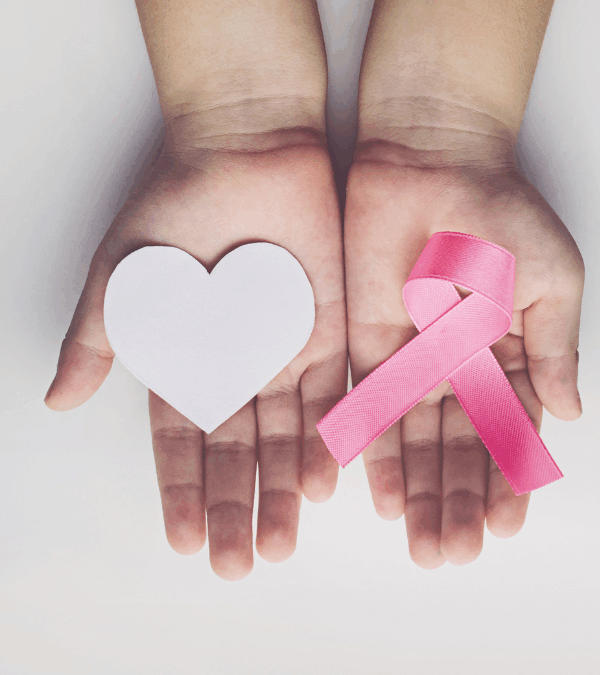Life After Breast Cancer: How to Keep Your Heart Strong and Healthy
October is Breast Cancer Awareness Month, a moment to put the spotlight not only on treatment and recovery, but also the long-term wellbeing of women after breast cancer. This blog has been writted by NCIM Nutritional Therapist Lillian Klein, who specialises in breast cancer – for patients looking for breast cancer prevention support, who are currently undergoing treatment or no longer have breast cancer but looking to keep supporting their journey back to health.
Why think about the heart?
After recovering from breast cancer, one area that deserves attention is heart health. Some cancer treatments can influence cardiovascular risk over time, but the everyday things we eat, drink, and do make a real difference.
Recovery isn’t only about scans and follow-ups; it’s also about supporting energy, sleep, mood, metabolism, and the cardiovascular system that powers daily life.
The same foundations that help the heart – balanced nutrition, regular movement, restorative sleep, and steady stress support – also tend to help joints, bones, and digestion after treatment.
Heart-Smart Foundations
1) Build a heart-friendly plate
· Aim for mostly plants, adequate protein, and healthy fats, without cutting out whole food groups (unless advised)
· Vegetables: Fill at least half your plate with different coloured vegetables (fresh or frozen). The more colours there are mean the more polyphenols you are consuming. Polyphenols are plant compounds widely considered to be cardio and cancer protective.
· Fruit: Aim for 1-2 portions of fruit per day, particularly berries (fresh or frozen).
· Protein at each meal: fish, eggs, poultry, tofu/tempeh, beans and lentils, or yoghurt. Protein steadies appetite, supports muscle and recovery.
· Fibre & slow carbs: Chia seeds, flax seeds, oats, brown rice, quinoa, pulses, potatoes with skins are all excellent sources of fibre which helps lower the risk of heart disease.
· Healthy fats: extra-virgin olive oil, nuts, seeds, avocado; oily fish 2× per week. Healthy unsaturated fats help lower LDL cholesterol and increase ‘good’ cholesterol.
Try this simple pattern for a well balanced meal plate: Half plate veg/salad → palm-size protein → ½ cup of wholegrain/beans or potatoes → drizzle of olive oil / sprinkle of nuts or seeds.
2) Make friends with fibre (and your gut)
Fibre (oats, barley, beans, lentils, vegetables, fruit, chia, flax) helps support healthy cholesterol and a balanced gut. Build up gradually and drink water to keep things comfortable. If your digestion is sensitive post-treatment, start low and go slow.
Easy wins: a tablespoon of milled flax on breakfast; add half a tin of beans to soups, salads; swap to oats a few mornings each week.
3) Choose fats that help
Favour olive oil, nuts, seeds, and avocado. Include omega-3s from oily fish (salmon, sardines, mackerel) or plant sources (chia, flax, walnuts). These choices support a healthy lipid profile and an inflammation-sensible way of eating.
4) Flavour
Lean on herbs, spices, lemon, garlic, chilli, vinegars for flavour. Add potassium-rich foods (greens, beans, tomatoes, bananas, potatoes) as these foods naturally support heart-smart plates.
5) Alcohol limits
For cancer prevention and heart health, less is better. If you drink, plan alcohol-free days and have satisfying non-alcohol options to hand (sparkling water + citrus + mint; alcohol-free “spritzers”). Your sleep and morning energy will likely improve too.
6) Sleep & stress management are heart care
Short sleep and constant stress can nudge blood pressure and blood sugar upward. Protect a wind-down routine (lights down, screens off, warm bath with Epsom salts, meditation, breathwork, gentle stretches).
Movement—kept simple and safe
Movement supports heart health, energy, mood, and sleep. You don’t need a gym plan to begin:
· Aim to move most days in ways you enjoy (a purposeful walk, light cycling, dancing in the kitchen, gardening).
· Include some strength-building across the week (bands, bodyweight, or everyday tasks) if you can, and seek individual guidance if you have concerns (e.g., lymphoedema risk, pain, bone changes).
· Start where you are; consistency beats intensity.
Know your numbers (with your GP team)
It’s reasonable after treatment to keep an eye on blood pressure, lipids, and glucose/HbA1c, alongside weight if relevant to your goals. Home tracking can be a light-touch: occasional BP checks with a validated monitor, noticing sleep and step patterns, and bringing those notes to appointments.
Example ideas for heart healthy meals
· Breakfasts: Greek/kefir yoghurt + berries + milled flax or chia seeds; vegetable omelette + wholegrain toast; overnight oats with chia and cinnamon (add Greek Yoghurt or silken tofu for extra protein).
· Lunches: lentil & quinoa salad (lots of colourful plants) with olive oil/lemon; sardines on toast with a large green side salad; tofu & veg stir-fry with brown rice.
· Dinners: salmon (or tempeh) tray-bake (peppers, broccoli, aubergine, sweet potatoes); bean & veg chilli with avocado and yoghurt; Mediterranean chicken or chickpeas with peppers, tomatoes and olives.
· Snacks (as needed): edamame, hummus with veg, a handful of nuts and fruit, Greek yoghurt.
When personalised help is useful
· Your cholesterol or blood pressure has crept up and you want a food-first plan alongside medical care.
· You’re fatigued or appetite is patchy and your current diet doesn’t feel supportive.
· You’re navigating menopause symptoms and want a plate pattern that supports sleep, mood, and weight stability.
NCIM can help. Book a nutrition appointment with Lillian and she will create a heart-smart plan that fits your tastes, routines, and medical context that is both practical, and sustainable.
Lillian Klein – NCIM Nutritional Therapist (mBANT, CNHC)


